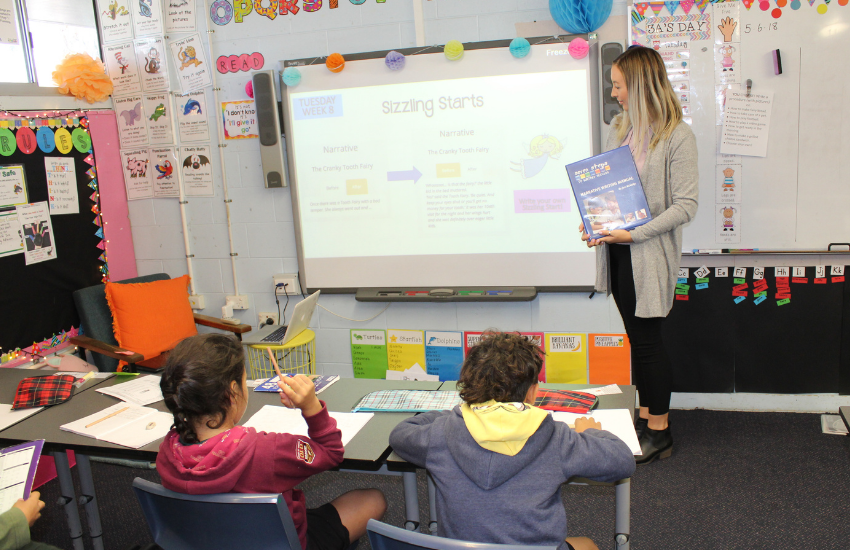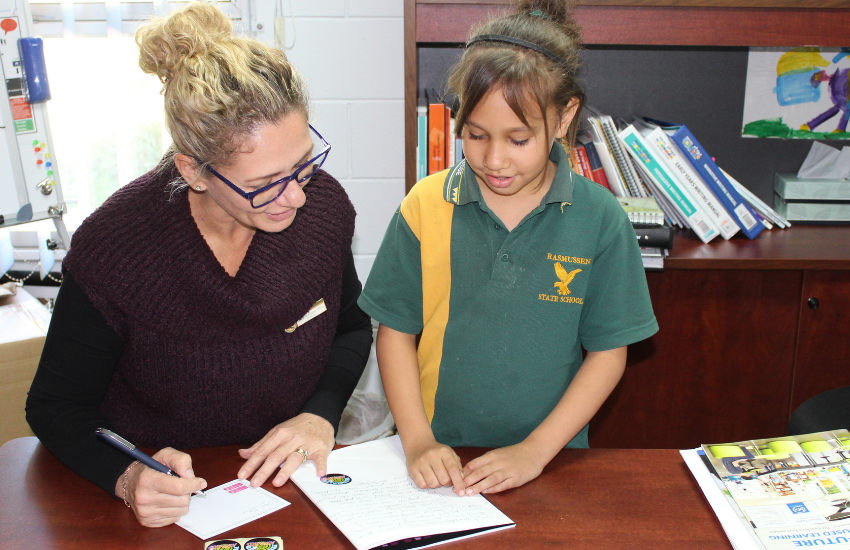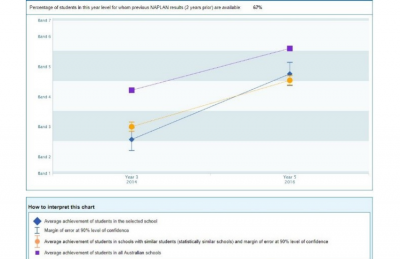Turning around hearts, minds and writing results
A remarkable school in Northern Queensland has taken tremendous strides in improving student writing.
Since implementing the Seven Steps at the end of 2014, principal Claudine Moncur-White and the teachers of Rasmussen State School have transformed their school from one of the worst-performing Queensland schools to significantly outperforming the state in writing improvement between 2015-2017.
Even better, the improvements they’ve seen haven’t just been in writing ability. In under four years Rasmussen, a school with an ICSEA value of 803, has built up student confidence in writing, increased their willingness to learn and improved students’ communication and engagement with staff and peers.
Tensions Tighten
For forty years Rasmussen State School, a medium sized school, has been proudly educating young boys and girls of the Upper Ross area of Northern Queensland, their mission is to ensure ‘every day in every classroom, every student is learning and achieving! We get ONE chance at a child’s education – it must be the best.’

With an ICSEA value of around 803 for the past two decades (two standard deviations below the national average), Rasmussen has a very high population of at-risk students:
- 70% of its student sit in the bottom quarter on the social-education advantage scale
- 10% have a disability
- 61% are Indigenous Australians.
These factors have created a complex range of issues, which has directly affected student performance, motivation, confidence and well-being.
And the data reflected this. In 2014 the Year 5 students’ average NAPLAN score for writing dropped below the minimum national standard while the Year 3’s fell to Band 2, just on the minimum national standard.
Planning for Success
Claudine knew to implement real change she had to build the capability of her staff to be able to teach explicit strategies to improve students.
The first measure Claudine introduced school-wide was 30 minutes of Writing on Demand at the start of each day.
Students got into a habit of writing. It improved their confidence in being able to write and to express themselves.
But Claudine felt it wasn’t until they implemented the Seven Steps that students began to be fully engaged and improve technically.
A major reason for Rasmussen’s improvement and successful adoption of the Seven Steps was the school’s fully supportive implementation process.
‘We used a hands-on approach; our leadership staff would take a class through Seven Steps Action Activities in front of year-level teachers.
The following days and weeks teachers would then implement what they had seen in their own classes while being coached (supervised) by our leadership staff.’
In addition to the coaching, Claudine used staff meetings for further training and explanation to ensure the whole school was confident to teach the Seven Steps.
Show, Don’t Tell
In just a few short years Rasmussen State School saw some incredible improvements. Claudine noted the immediate impact was in students’ attitude and demeanour.
And from a data perspective, Claudine has seen vast improvements in her students’ NAPLAN results over the last four years.
- Rasmussen’s Student Gain (Year 3 and 5 results) between 2014 to 2016 saw massive improvements compared to both the national average and schools with similar students, improving by half a band more than the national average.
- Since 2014 the average results for Year 3s in NAPLAN’s writing component have jumped from Band 2 to Bands 3 and 4.
- Year 5 averages have also improved the equivalent of 1.25 -bands over the same period.
- For the 2015-17 period, the state of Queensland had an effective size gain of -0.02. Rasmussen scored substantially higher (0.43) indicating that while the state’s writing improvement had stagnated, Rasmussen students were flourishing!
Banning the Boring
Claudine shared some of the factors that she thinks contributed to their fantastic improvement:
- the simplicity of the Seven Steps made it easy for teachers to instruct and students to understand,
- the short Action Activities kept students engaged, and
- the constant writing improved their confidence and ability, not just in writing but overall.
Claudine advocates that ‘by using the strategies of the Seven Steps, Rasmussen teachers simultaneously prepared students for NAPLAN testing.’
Criteria such as audience, text structure, ideas, persuasive devices, cohesion, vocabulary and sentence structure are all taught and developed in the Seven Steps.
Because the Seven Steps blends so well with the curriculum it makes [teaching] so easy and straightforward. The students at Rasmussen have become much more engaged in school and have the confidence and willingness to put pen to paper.
Exciting Endings
Claudine is determined to ensure her staff are consistently coached, building their capability to teach explicit strategies to improve students’ learning and experience.
Under her leadership Rasmussen will be systematic in only embedding data-proven strategies to maximise student achievement. Based on their results, the Seven Steps to Writing Success is firmly a part of their ongoing strategy!

Thank you Claudine for sharing your story of writing transformation with us!
Your hard work and dedication to your school and students are amazing, and we’re so happy that the Seven Steps has helped you on the way to achieving your goals.
Want to see the same outcomes as Rasmussen?

Discover how to transform student engagement and writing data for your school.

Step 2: Sizzling Starts is fun to teach, easy to learn and will have your students cheering for more!



